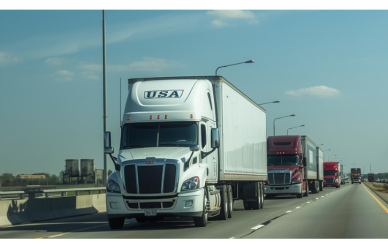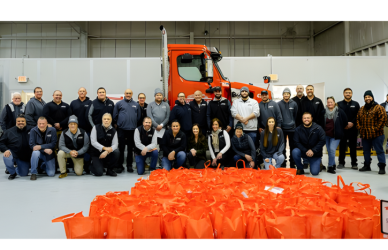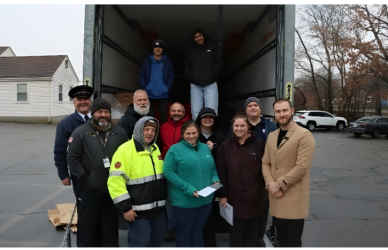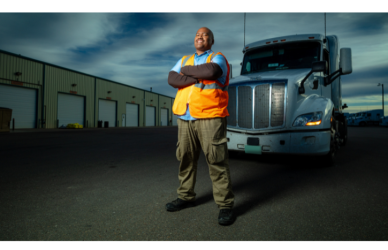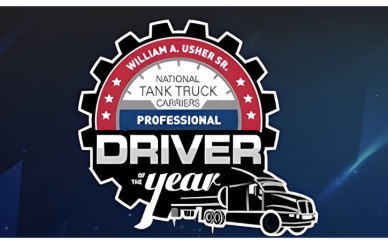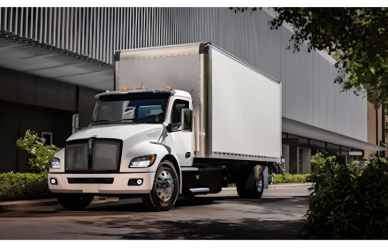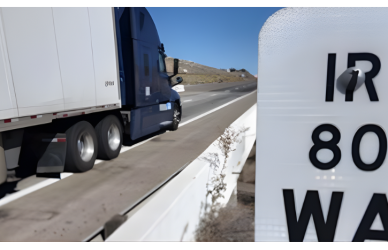Is America ready for autonomous trucks on the freeway? Despite advancements in technology, the trucking industry has been slow to embrace self-driving vehicles. Challenges in manufacturing, cost, regulations, and logistics have raised doubts about the future of autonomous trucking.
Those leading the way in research and development see the immense potential that self-driving software can offer the industry. Boris Sofman, robotics innovator and head of trucking at Waymo, believes that achieving the vision of autonomous trucks is well worth the effort.
“Trucking is one of the most exciting industries,” Sofman explained in an interview with Transport Topics. “Compare [autonomous trucking] to what’s happened with important technologies like the computer or the internet. It doesn’t just transplant certain segments of a sector with higher efficiency or cost dynamics. It completely enables you to rethink how you approach this really critical part of the economy.”
The impact of automated vehicles on delivery times and driver well-being cannot be denied; however, there are some significant hurdles that must be overcome for autonomous trucking to become a widespread reality. Let’s dig into seven key challenges self-driving trucks will face in the industry.
Self-driving software was built for cars, not trucks
Self-driving software was initially designed for cars, overlooking the unique challenges faced by trucks. The size and weight of Class 8 tractor trailers make them drastically different from smaller passenger vehicles, impacting their braking, maneuverability, and collision force.
While self-driving cars have focused on short, low-speed routes in urban areas, autonomous trucking envisions long-haul journeys through varying weather and terrains, while potentially carrying dangerous cargo. Companies like Zoox and Cruise have catered to urban settings, while trucks require technology capable of handling highway routes.
Early investment in autonomous driving has primarily centered around all-electric passenger vehicles, leaving the trucking industry searching for ways to adapt this technology. Translating sensors, lidar, and onboard cameras to a new context with numerous variables and safety concerns is essential. Driving systems need to be universally applicable, as opposed to being built for specific situations or vehicles.
Trucks often lack redundant safety platforms
The trucking industry lags behind the car industry when it comes to onboard computers and driver assistance technologies. According to Sofman, there are significant barriers preventing trucks from going driverless. Unlike cars, many trucks do not have redundant safety features to rely on in case of brake or steering failure.
Sofman emphasized the importance of having a built-in system with redundancy and safety features before operating without a human driver, stating that this is not something Waymo or anyone else should do. On the other hand, passenger vehicles have already seen multiple generations of vehicles capable of this.
To address this issue, Waymo has teamed up with Daimler, a heavy-duty truck manufacturer, to synchronize software development with the creation of hardware components. Until trucks have adequate automated safety features, a fully driverless experience is not feasible.
Autonomous trucking has more use cases than robotaxis
Self-driving technology has shaken up the taxi industry, allowing them to navigate the same city blocks every day; however, even with this narrowed focus, it remains a challenge to account for every possible situation. A recent incident involving a Cruise robotaxi colliding with a firetruck highlights the complexities.
On the other hand, the trucking industry presents an entirely different set of challenges. With companies specializing in regional distribution or long-haul freight, trucks carry a wide range of materials, from refrigerated goods to flammable substances. Creating autonomous trucking software that can handle these diverse uses and endless variables is essential before it can be scaled commercially.
Testing requires long highway driving
The demands of self-driving technology for trucks go far beyond what robotaxis require. Not only do trucks need to road test on highways instead of city streets, but they also need to prove themselves over long distances. Unlike short urban journeys, self-driving trucks must be capable of covering hundreds of miles cross country.
According to Sofman, a flawless 30-minute run on a simple course is not enough to prove the reliability of driverless technology, especially for trucks. What truly matters is how developers handle the rare and unlikely one-in-a-million-mile scenario.
Although one in a million may seem unlikely, millions of freight trucks travel tens of thousands of miles each year in America alone. To ensure their technology is ready for the highway, self-driving developers must invest in extensive and time-consuming road tests.
Deployment is logistically complicated
Imagine an autonomous truck effortlessly cruising 1,500 miles from Los Angeles to Houston on I-10. It sounds marvelous, but practical concerns remain. How will these vehicles refuel? Can they navigate weigh stations and road closures?
Enter the concept of transfer hubs. Some companies are already discussing the creation of these hubs, where autonomous trucks can pick up and drop off their trailers. Meanwhile, human drivers will handle the first and last-mile routes on surface streets, including deliveries to loading docks.
Restructuring operations is just the tip of the iceberg. Major distributors and trucking companies will also have to navigate through the maze of regulatory and legal requirements.
The trucking industry employs thousands of drivers
Autonomous trucking is often criticized for potentially eliminating jobs for drivers; however, the trucking industry is currently facing a shortage of drivers qualified due to poor work-life balance. Self-driving trucks could actually improve working conditions and create new opportunities, according to Sofman.
Sofman explains that autonomous driving is best suited for routes that are less desirable for professional drivers.
For now, long-haul routes will still need a human operator. To make autonomous trucking a reality, trucking companies will need to provide driver incentives alongside investments in self-driving technology.
The public is still uncomfortable with self-driving trucks
From cautious skepticism to exciting possibilities, the idea of self-driving vehicles has captivated the American public. While witnessing a robotaxi navigate city streets may be one thing, envisioning an 80,000-pound big rig effortlessly changing lanes on a bustling freeway without a driver is a whole new level.
To gain public trust in this technology, education and community partnerships are crucial, according to Sofman. He also emphasized the importance of first-hand experience, urging people to take a ride and truly understand the capabilities of autonomous vehicles.
While the initial introduction to driverless technology for most Americans may be through passenger cars, it is the widespread acceptance of robotaxis that could pave the way for the realization of self-driving trucks. The goals of trucking may differ, but the embrace of autonomous rideshare services might be the key that finally unlocks the potential of autonomous trucks.
Source: Transport Topics



